As spring transforms into summer, the natural world undergoes many changes.
These changes were celebrated as part of the traditional festival of Beltane that has existed for millenia.
Discover the origins, rituals and traditions of Beltane and how you can celebrate this long standing tradition in your own way.
This post may contain affiliate links. If you click on one of them, we might receive a small commission (at no extra cost to you). Thanks for your support!
Table of Contents
- 1 What is Beltane?
- 2 When is Beltane?
- 3 Beltane Meaning
- 4 Beltane Spelling
- 5 How do you pronounce Beltane?
- 6 Beltane Origin
- 7 Beltane Symbols
- 8 Beltane Traditions and Rituals for Beltane
- 9 Happy Beltane – Beltane Blessings
- 10 How to celebrate Beltane?
- 11 Beltane Colors
- 12 Beltane Goddess
- 13 Beltane Foods
- 14 Beltane Recipes
- 15 Discover more about Beltane
What is Beltane?
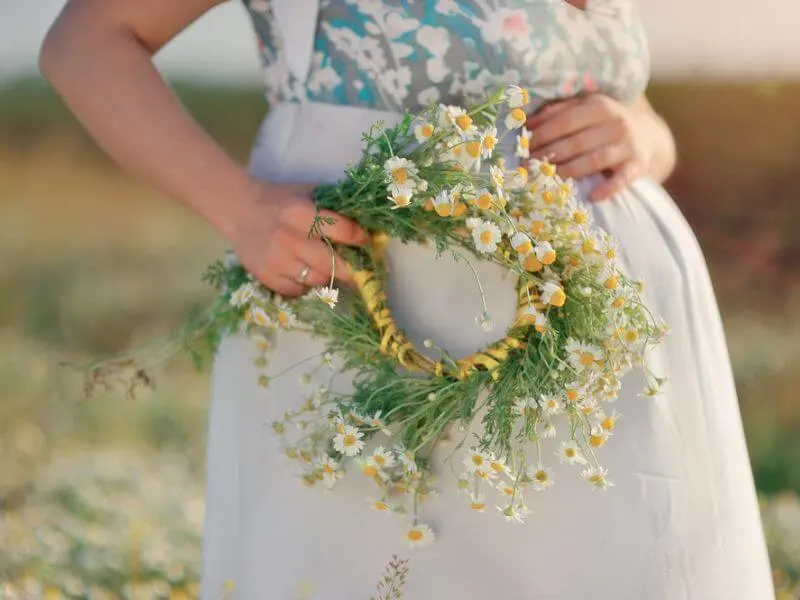
Beltane is an ancient festival to mark the beginning of summer.
It primarily celebrates growth, fertility and new life.
The origins of this festival are rooted in paganism. Gods and Goddesses, as well as fairy folk, were believed to have great influence over the outcome of the harvest.
This festival was designed to celebrate, as well as protect against harm to ensure a fruitful yield.
When is Beltane?
Beltane is celebrated on May 1. Often the Beltane festivities start at sundown on April 30 and continue until the sun sets on May 1.
Traditionally this festival falls midway between the Spring Equinox and the Summer Solstice.
This type of festival is sometimes known as a Celtic cross quarter festival, or fire festival.
It is one of four major annual festivals that took place throughout the Gaelic year. These festivals are as follows:
- Imbolc (February 1)
- Beltane (May 1)
- Lughnasadh (August 1)
- Samhain (November 1)
Today, the Beltane date is generally celebrated on the first day of May each year in the Northern Hemisphere.
November 1st is the day when the ancient festival is celebrated in the Southern Hemisphere.
In some areas, the Beltane May Day celebration took place when it was time to bring the cattle from their overwinter grazing areas to their summer pastures.
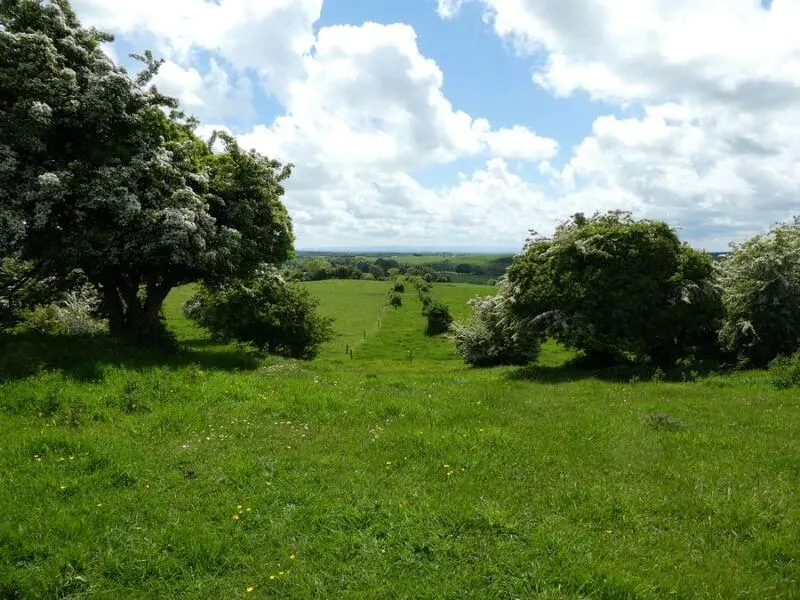
The festival was also traditionally celebrated when certain types of tree started to bloom. Hawthorn is one such tree species.
Beltane Meaning
The origin of the word Beltane is not completely clear and different suggestions have been put forward.
Undoubtedly, fire plays a large role in this traditional festival.
Some scholars indicated that the name may stem from the word for fire in Irish, tine.
There may also be connections to the Celtic God of healing, Belenus.
These possible origins of the meaning of Beltane were first mentioned in a 10th century Irish text (Sanas Cormaic or Cormac’s Glossary of Irish words and phrases).
The importance of this festival can be seen in the fact that the Irish word for the month of May, is Bealtaine.
Beltane Spelling
Beltane is sometimes written with a different spelling in English. This can be quite confusing!
Some of the most frequently seen variations of Beltane include:
- Beltain
- Beltaine
- Beltine
- Beltany
The festival is commonly referred to as the Bealtaine festival in Ireland. This Bealtaine meaning is connected with the Irish word for the month of May, Bealtaine.
In Scottish Gaelic, an old way to refer to the month is Bealltuinn.
How do you pronounce Beltane?
Beltane is the anglicized version of the word and is pronounced “bel·tayn”.
In Irish, the word Bealtaine (May) or Lá Bealtaine (the day of Beltane) can be pronounced in several different ways depending on the dialect in the different regions.
Pronunciation in the Ulster, Munster and Connect dialect can be found on the Teanglann Irish-English dictionary website.
Beltane Origin
Beltane is an ancient Gaelic festival that can be traced to pagan times.
It was celebrated in Ireland, Scotland, the Isle of Man and some other locations.
The earliest records of this celebration date back to Irish literature in Sanas Cormaic or Cormac’s Glossary (early 10th century).
The focus of this festival is fertility and productivity of the land during the summer season.
Protection against harm is another important element associated with this celebration.
The aos sí, or fairy folk, were thought to have wide reaching influence on cattle, crops and other aspects of daily life.
Around the time of Beltane, these magical folk were supposedly out and about more as they relocated from their winter to summer locations.
Many Beltane rituals focused on either protection from, or appeasing, the fairies to ensure good luck in all things for the coming season.
Beltane Symbols
This celebration at the beginning of May marked an important time in the agricultural calendar in ancient times.
Great emphasis was placed on the protective rituals.
This was to ensure that the growing season would be a favorable one.
The following are the main symbols associated with these Beltane traditions and rituals.
Fire
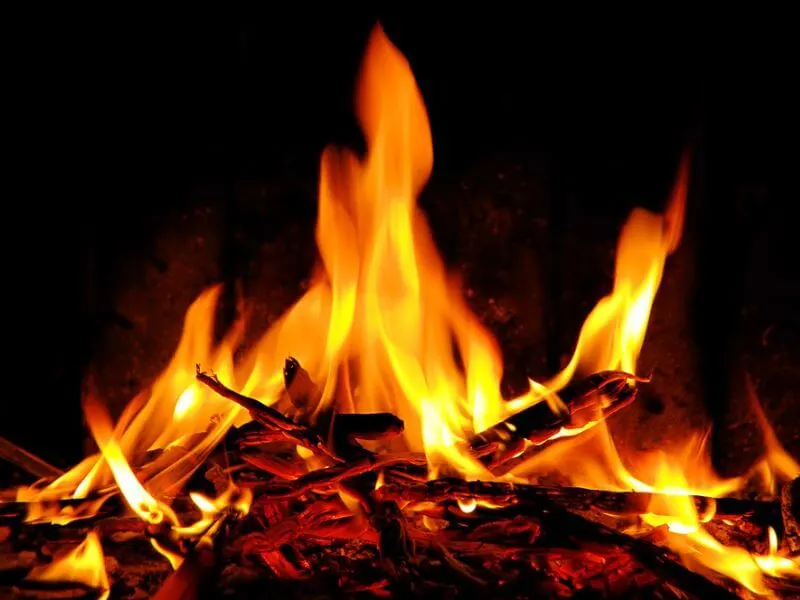
Typically, fire is the most common symbol associated with Beltane (and the other three Celtic Fire festivals).
Large bonfires were lit on the eve of Beltane (April 30) to welcome the new festival.
Many of the Beltane rituals also involved fires as a form of protection and cleansing.
There may also have been connections between fire, sunlight and the longer days of summer.
Water
Water is strongly connected with the festival of Beltane.
As well as sunlight, water is also necessary for the health and productivity of people, animals and crops.
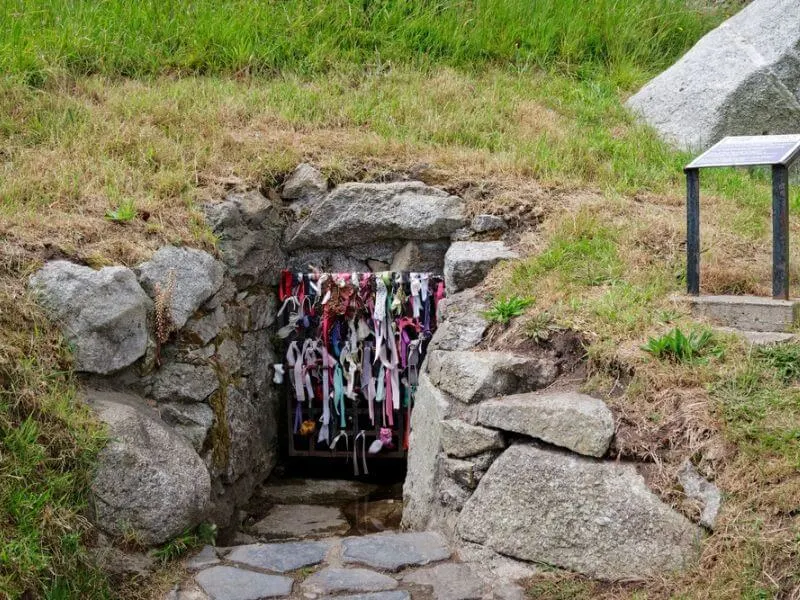
Prayers for protection and good luck were often said at holy wells at first light on Beltane.
The cleansing and revitalizing aspects of water are important attributes of this celebration.
May Bush, May Bough and Maypoles
Decorated trees known as May Bushes or May Boughs are key symbols of this ancient festival.
Maypoles are also a symbol of Beltane in some areas.
Not only were trees decorated, branches and some flowering plants were also used to decorate the exterior of houses to mark the occasion.
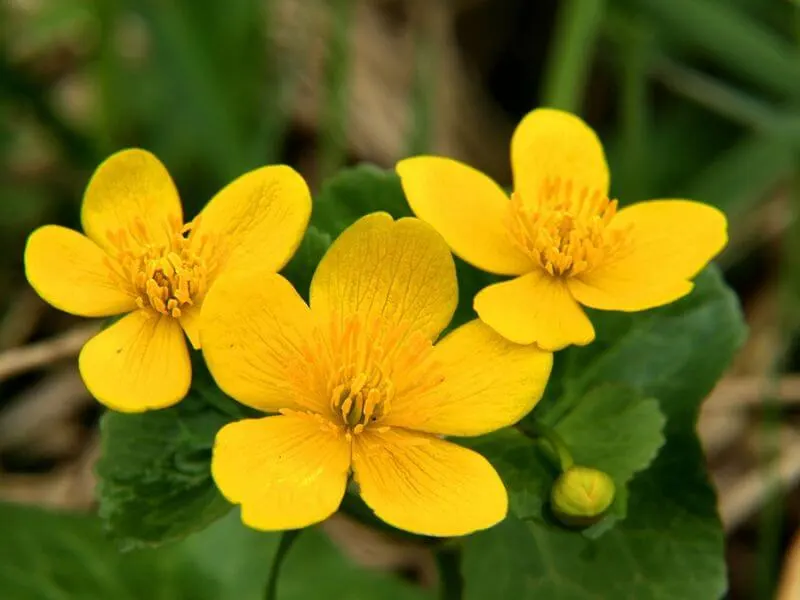
The Marsh Marigold, or May Flower, is one such plant that was used as decoration that flowers at this time of year.
Milk and Dairy Products
Dairy products, especially milk, are commonly connected with Beltane.
This dietary staple was an important dietary constituent in gaelic diets.
Ensuring the health of the animals such as cows, goats or sheep that provide milk would have been very important.
Some traditions involved painting the sign of the cross with milk on a person or animal to help protect it.
It was also forbidden to share milk with anyone outside of the family on Beltane. Otherwise there would not be milk for the family during the year.
Butter was also thought to be vulnerable at this time of year from the influence of the fairies.
Certain traditions, such as placing a horseshoe beneath the churn developed as a way of protection.
Beltane Traditions and Rituals for Beltane
Beltane is associated with many different rituals and longstanding traditions.
In Ireland, many of these traditions were still being carried out until the early 20th century in some places.
Their popularity then waned for several decades, but there is a renewed interest in such ancient festivals again.
Discover more of the rituals in more detail in our Related Article: Rituals and Traditions for Beltane
Beltane Fires
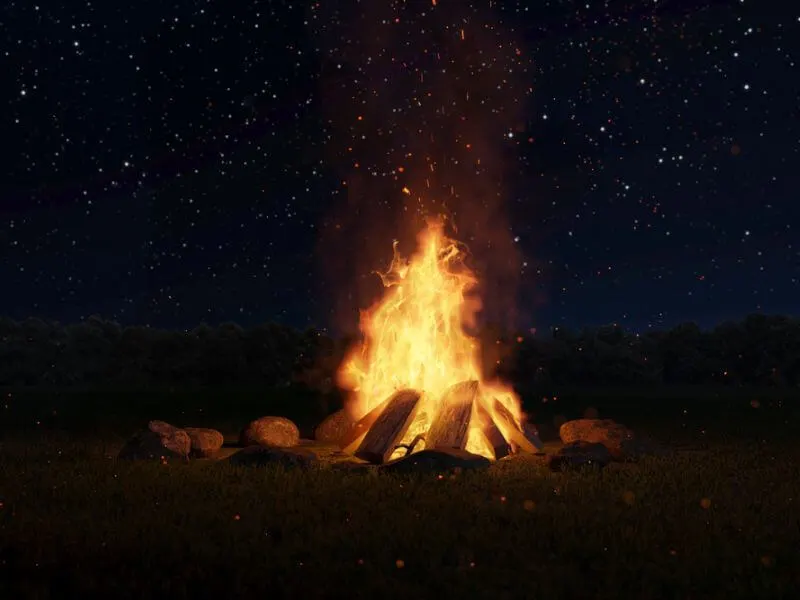
Fire is a major feature of the four main Gaelic celebrations of Imbolc, Beltane, Lughnasadh and Samhain.
A Beltane fire was considered sacred and symbolic.
It needed to be ignited solely by rubbing wood as this was considered the purest way to start the fire.
Typically, large fires or bonfires would have been lit in prominent hilltop places to mark this celebration.
Fires in the homes would have been extinguished and relit with a sacred flame from the new Beltane fire.
This pagan fire tradition was a widespread practice in Ireland and beyond well into the 19th century. At some later point in time, these traditions fell out of favor.
Fires and Cattle
Cattle were particularly important in ancient Celtic society.
They were a measure of wealth for these pastoral people.
As cattle were of such central importance, it is little surprise that much effort was invested in protecting them from harm and diseases.
One practice was to light two large fires and drive cattle between them, while druids chanted their protection charms.
Other traditions imply that the cattle would have been made to circle to the fires, or even jump over the embers to gain protection.
The smoke and the ashes would sometimes also be purposefully blown or rubbed over the cattle as another form of protection.
Beltane Water
Water, as well as fire, is an important element associated with Beltane.
Traditions and rituals evolved around water wells.
The first water drawn from a well on May 1, was thought to have special properties.
These properties vary from ensuring good health and prosperity, to making one more alluring in a sexual way.
In a similar way, the morning dew from May 1 was also said to have special powers imbued into it.
Tree and Plant Decorations
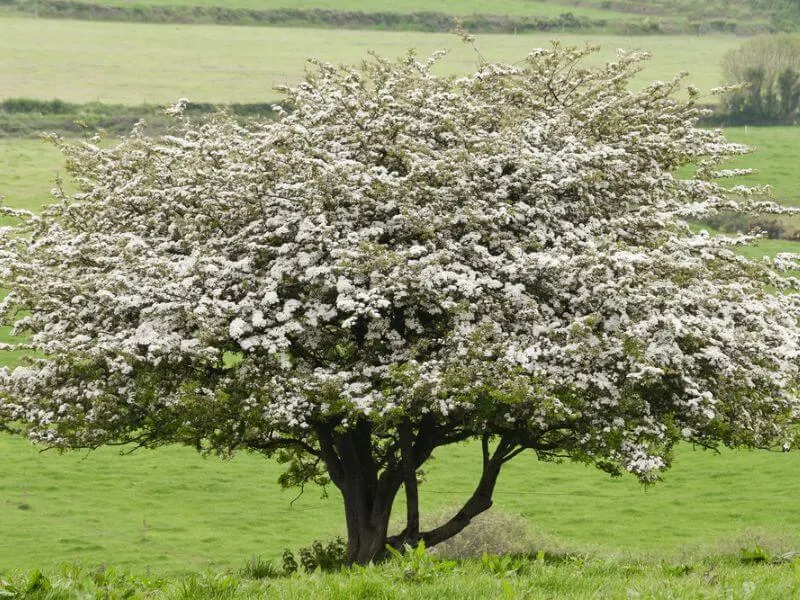
Beltane marks the beginning of the biggest vegetative growth spurt of the year.
Decorations made from the white, yellow and blue flowers that blossomed at this time were used to decorate houses and doorways.
These included the branches of hawthorn, rowan, hazel and other trees, as well as flowers such as primroses and gorse.
Interestingly, hawthorn was not to be brought into a house as this was thought to be unlucky and brought death. (Related Article: Trees of Ireland)
Usually thorny bushes were not supposed to be cut or harmed in any way as they were thought to have special connection with the fairies.
May Bush and May Bough
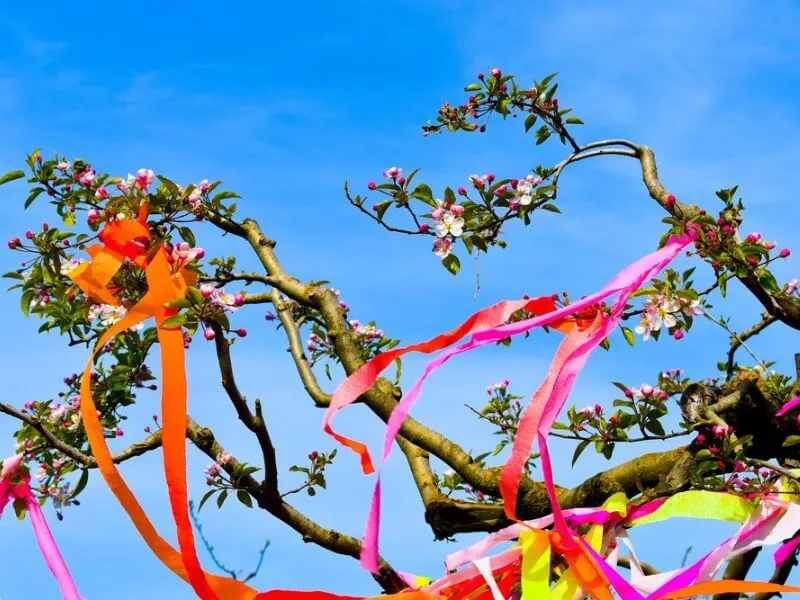
Other traditions included decorating a May Bush or May Bough.
For the entire month of May in some places, ribbons, scraps of material and other colorful objects were hung from the branches of a particular tree.
Similar rituals with Maypoles and the famous Maypole dance occur elsewhere in Europe to celebrate the start of summer.
Maypole are also very much integrated into the Wiccan celebration of Beltane.
Appeasing the Fairies
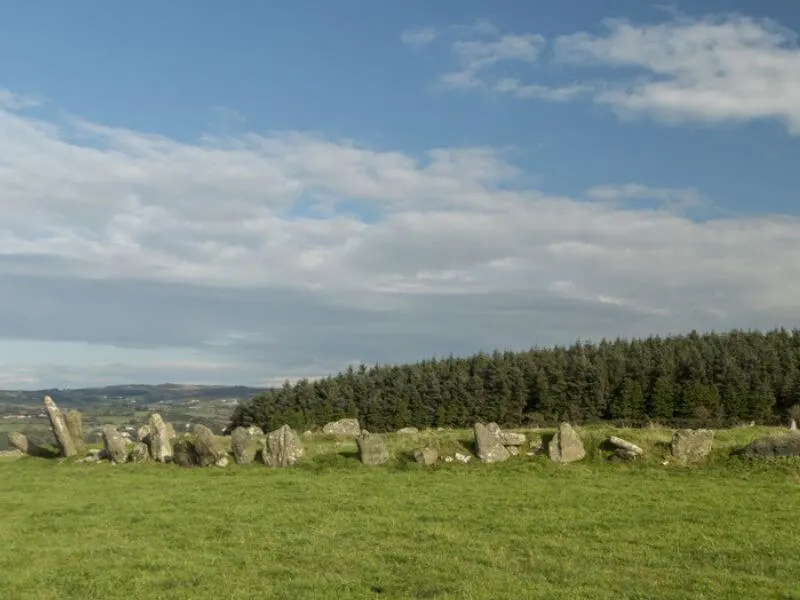
Many rituals at this time of year center around the theme of protection, especially from the aos sí, or fairy folk.
Connections between the real world and the Otherworld were thought to be closer at this time of year.
Fairies move to their summer areas and so were more likely to be encountered.
In order to ensure health and prosperity for the people, animals and crops, people left offerings to the fairies.
Rituals were also conducted to ensure that the fairies would be mollified and not provoked for the coming fruitful season.
These would include bringing the cattle to the nearby fairy fort or stone circle and sacrificing a small amount of their blood in the circle.
In Ireland, these ancient stone circles date back to the Bronze Age (ca. 1500 BCE – 600 BCE) and can be found across the country.
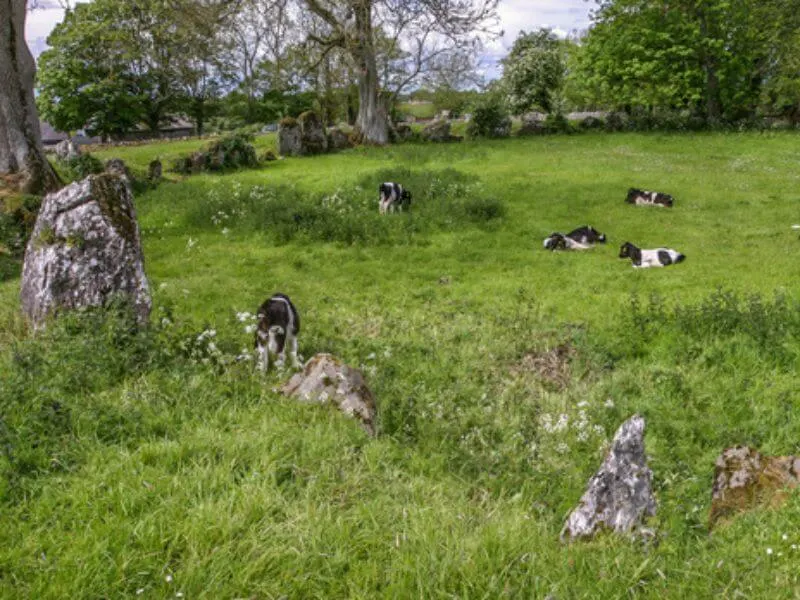
They have long been associated as places of superstition.
While many other large stones have been cleared off farming land, many of these circles have survived down through the ages.
Happy Beltane – Beltane Blessings
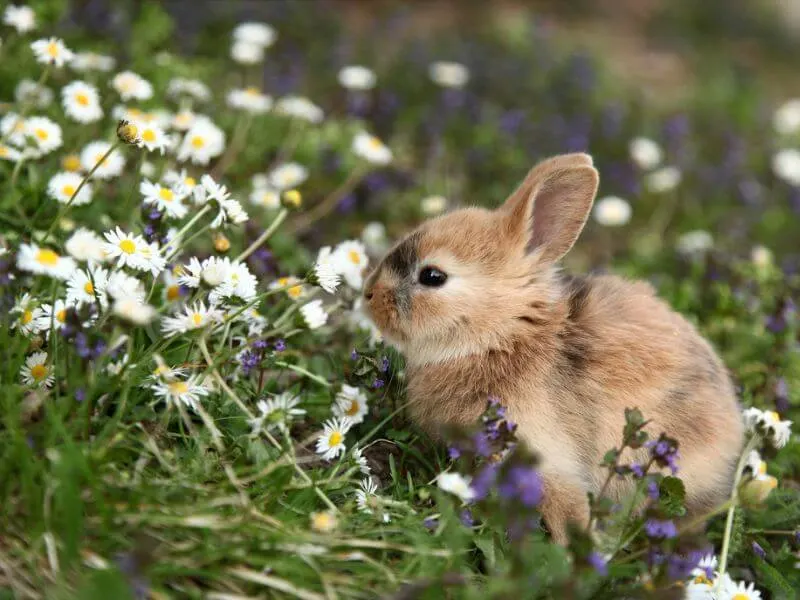
Wishing someone a Happy Beltane is a friendly way to express your good wishes for the summer time.
Here you will find some inspiration in the form of Irish Blessings for Beltane.
If you are looking for some more, then you can read our related article: Beltane Blessings
May your joys be as bright as the morning,
and your sorrows merely be shadows
that fade in the sunlight of love.
For each petal on the shamrock
This brings a wish your way
Good health, good luck, and happiness
For today and every day.
May your blessings outnumber the shamrocks that grow
and may trouble avoid you wherever you go.
Always remember to forget
The troubles that pass away,
But never forget to remember
The blessings that come each day.
How to celebrate Beltane?
How to celebrate the Beltane festival depends on your own personal tastes and beliefs.
You can simply mark the occasion for yourself or share the joy of this celebration with a small group of friends and family.
People of all ages and walks of life can enjoy this Pagan May Day celebration of nature.
For more inspiration and creative ideas, check out our Related Article: How to celebrate Beltane.
Attend a Bonfire
If you are lucky, there may be a Beltane bonfire in your locality.
It is worth checking out in advance if one will take place.
Often these fires are lit on the eve of Beltane, April 30.
The fire acts to welcome the arrival of the ancient festival.
If not, perhaps you could also have your own ceremony with a small fire, if it is safe to do so.
Alternatively, it may also be possible to simply use a candle or two to mark the occasion.
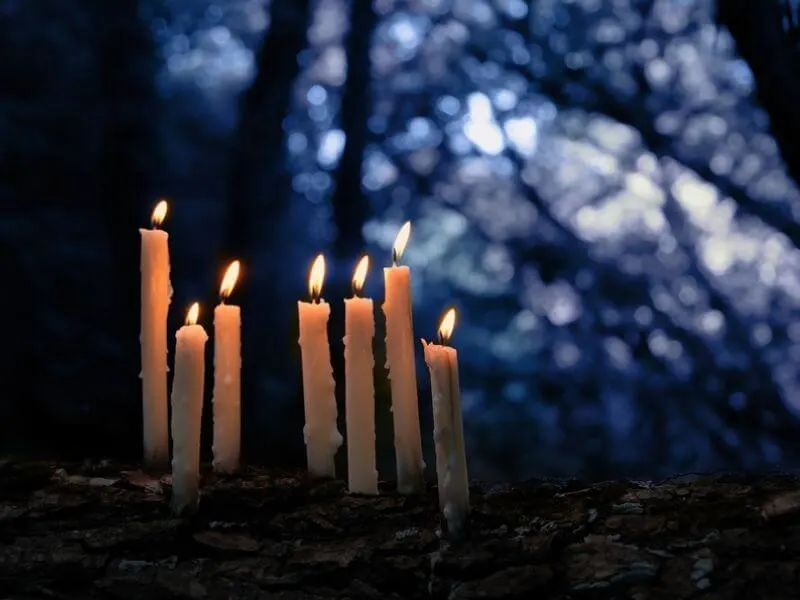
Beltane Fire Festival
In recent years, a renewed interest in celebrating Beltane has occurred.
The Beltane Fire Festival takes place on Calton Hill in Edinburgh on the eve of Beltane (April 30).
It has been organized each year since the early 1990s by the Beltane Fire Society.
This modern celebration of the festival includes many different cultural influences and international performers.
The Festival is led by the May Queen and the Green Man.
Create an Altar
Some people opt to create an altar to celebrate this fire festival.
Typically such altars include flowers, especially white, yellow and blue ones.
Branches of hawthorn, hazel and rowan might also be a good choice, if they are available.
Fire is an important symbol of Beltane. Candles are therefore an integral part of a Beltane altar.
A small bowl of water and any of the other Beltane symbols mentioned above could also be included.
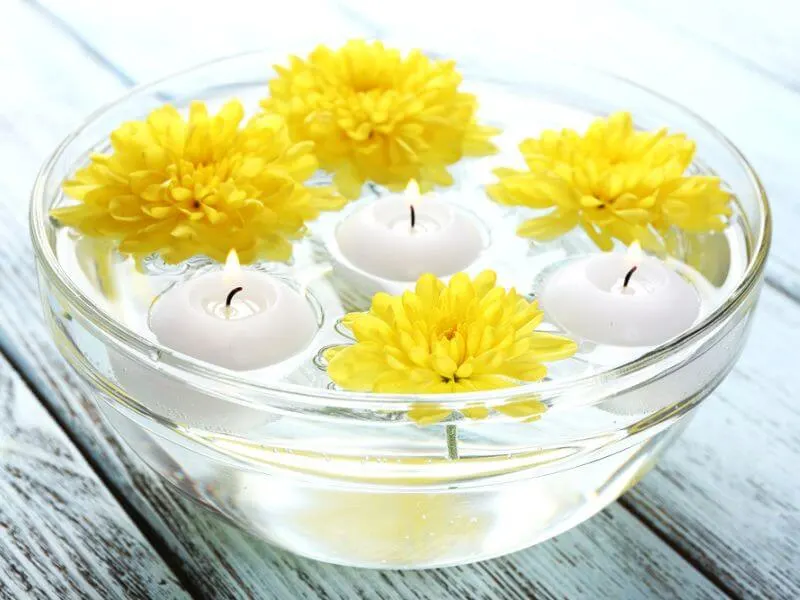
Decorate a May Bush
Decorating your own May Bush is one way to get involved in the festival of Beltane.
The trees typically associated with Beltane are hawthorn, rowan and hazel.
However, if you don’t have access to one of these trees, it is perfectly acceptable to use another type of tree.
In keeping with the spirit of the occasion, try to keep your decorations as biodegradable as possible.
Adding plastic objects that could accidentally cause harm to the wildlife in the area should be avoided.
Share a Beltane Blessing
Beltane is a time to share goodwill and optimism for the future.
In nature there is abundant change at this time in the form of growth and new life.
Why not simply share a blessed Beltane wish with someone who may appreciate it?
Read the Beltane Blessings article to find the most appropriate blessing for your purpose.
Beltane Colors
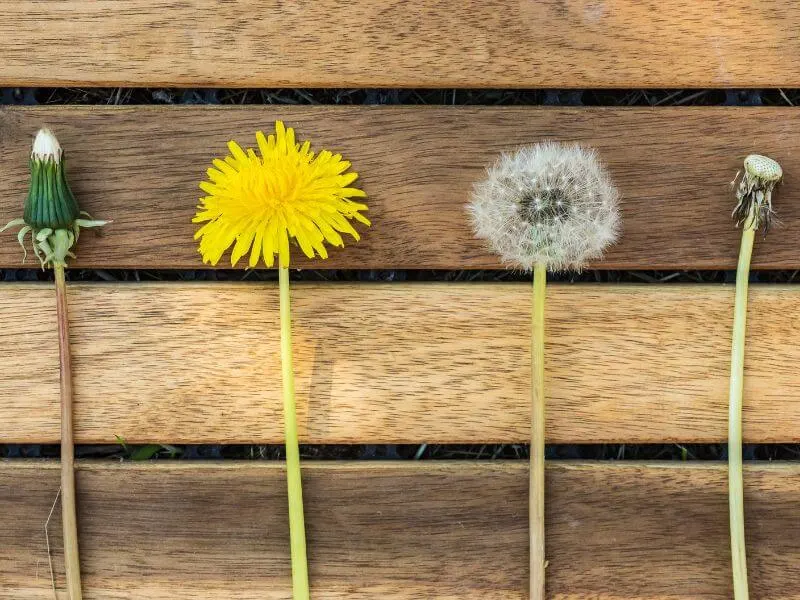
Beltane colors are one that represent growth, fertility and new life.
White and yellow flowers have also been traditionally used to adorn houses and other decorative elements.
These colors are typically easy to find in nature at this time of year.
Given that fire is one of the main symbols of this festival, it is not surprising that red and orange are also related to this celebration.
Beltane Goddess
There is a lot of information online and in books about different goddesses associated with this festival.
Unfortunately there are not a lot of strong references to support this information.
Áine the Celtic Goddess associated with the summer and sunlight for example, but not specifically the festival of Beltane.
Other suggestions focus on the Roman Goddess Flora, the Welsh Goddess, Creiddylad and there is even mention of a Lithuanian Goddess, Giltine.
Feel free to drop us a line, if you have more information about Beltane goddesses.
Beltane Foods
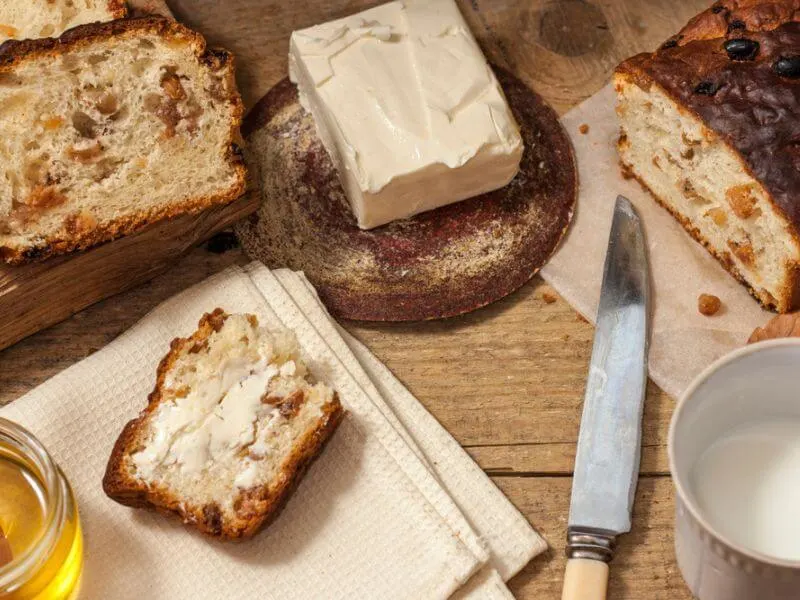
Dairy products are one of the main foodstuffs connected with Beltane.
Milk was used in some of the rituals, but is also a key ingredient in some of the recipes for Beltane as well.
Butter was not supposed to be made on Beltane as this was not thought to bring good luck.
However, if the butter was made on the eve of Beltane, the opposite was true.
In Scotland oatmeal was commonly used in Beltane celebrations, most often in the form of a Beltane bannock or bannoch Bealltainn.
Beltane Recipes
Having a Beltane feast is becoming a popular way to celebrate Beltane.
There are many different recipes to choose from including more traditional meals, as well as some more modern dishes.
Traditional Recipes for Beltane
Caudle is a Scottish traditional recipe typically eaten at Beltane.
The ingredients of this dish include oatmeal, milk, butter and eggs.
It resembles a type of eggnog or gruel and is eaten with a spoon from a caudle cup.
Beltane bannock or oatmeal cakes are another very traditional food that is eaten at this time of year.
Discover more about Beltane
Would you like to learn more about this ancient pagan holiday?
We have other useful resources on this website that will help you discover more about Beltane.
These articles explore the history, meanings, origins and traditions that have evolved around the festival of Beltane.
